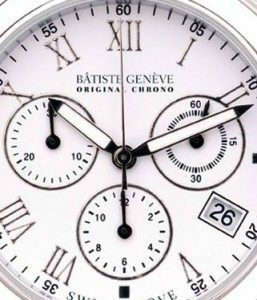Unit Conversion Example
Physics / / July 04, 2021
The Unit Conversion it is a method that allows us to make correct calculations with physical quantities, such as mass, distance and time. Its main objective is that have appropriate units for each of them, all of the same system of units.
This means that, for example, if mass, distance and time are related, and you are using the International System of Units, there must be Kilograms (Kg), meters (m) and seconds (s) respectively between the quantities of the calculation that is being done.
All the magnitudes are related to each other so that there is a Result in units of the same system.
You cannot be multiplying pounds (lb) by Kilograms (Kg), or centimeters (cm) by inches (in), for example, because they don't have the same measurement framework of mass and distance.
When problems arise, it is very frequent that some quantities are mentioned in units of the English System, and others in the International System. It will be necessary to transform those that are required, until all the quantities are found in the System that is chosen for convenience.
If you choose the International System of Units To solve the problem, all mass quantities must be in Kilograms (Kg); all distance quantities must be in meters (m) or multiples of meters.
If you choose the English system To solve the problem, all mass quantities must be in pounds (lb); All distance amounts should be in either inches (in), feet (ft), yards (yd), or miles (mi).
Conversion factors
The conversion factors are the numbers that represent the equivalence between two units of different systems (such as Kilogram and Pound), and that are for the same magnitude (such as mass, distance, time ...).
For example, 1 Pound, a unit in the English System, is equal to 0.454 Kilograms. It will be expressed as follows:
1 lb = 0.454 Kg
So the pounds (lb) will be multiplied by the Conversion Factor 0.454 to have the data in Kilograms (Kg).
To do the opposite operation, the Kilograms that are had are divided by 0.454. There will be an amount that will tell how many pounds there are.
Most used unit equivalences
Of all the conversions carried out, the most common occur in the same international system, between the multiples of the meter, unit of distance:
1 m = 10 dm = 100 cm = 1000 mm
1 Dm = 10 m, 1 Hm = 100 m, 1 Km = 1000 m
1 dm = 0.1 m, 1 cm = 0.01 m, 1 mm = 0.001 m
Among the units of mass, conversions involving the pound and the kilogram are used, from the English and international systems, respectively:
1 lb = 0.454 Kg
1 Kg = 2,202 lb
The ounce is another English unit of mass, whose equivalence in the international system is:
1 oz = 0.02835 Kg
1 Kg = 35.27 oz
Between the units of distance, conversions involving the mile (mi), the inch (in), the foot (ft), the yard (yd), and the multiples and submultiples of the meter are used:
1 in = 2.54 cm
1 ft = 30.48 cm
1 mi = 1.609 m
1 yd = 0.9144 m
Unit conversion
When you have a known quantity in some unit and you want to transform to another, the conversion factors in a Rule of Three will be used to know the new one:
For example, for the conversion of 200 meters to miles:
It has the equivalence of 1 mile = 1609 meters.
You want to know how many miles = 200 meters.
I know multiply crossed "1 mile" and "200 meters", and your product is divided enter the amount "1609 meters" that remains alone.
The solution of the Rule of Three is indicated as: how many miles = (1 mi) (200 m) / 1609 m.
The result is: 0.1243 miles
Examples of Unit Conversions
341 Inches (in) to Centimeters (cm)
1 in = 2.54 cm
341 in =? cm
¿? cm = (2.54 cm) (341 in) / (1 in)
Result = 866.14 cm
122.5 Yards (yd) to Meters (m)
1 yd = 0.9144 m
122.5 yd =? m
¿? m = (122.5 yd) (0.9144 m) / (1 yd)
Result = 112.01 m
420 Kilograms (Kg) to Pounds (lb)
1 Kg = 2,202 lb
420 Kg =? lb
¿? lb = (420 Kg) (2,202 lb) / (1 Kg)
Result = 924.84 lb
91 Feet (ft) to Centimeters (cm)
1 ft = 30.48 cm
91 ft =? cm
¿? cm = (91 ft) (30.48 cm) / (1 ft)
Result = 2773.68 cm
176 Ounces (oz) to Kilograms (Kg)
1 oz = 0.02835 Kg
176 oz =? Kg
¿? Kg = (176 oz) (0.02835 Kg) / (1 oz)
Result = 4.9896 Kg
735 meters (m) to miles (mi)
1609 m = 1 mi
735 m =? me
¿? mi = (735 m) (1 mi) / (1609 m)
Result = 0.4568 mi
992 Centimeters (cm) to Meters (m)
1cm = 0.01m
992 cm =? m
¿? m = (992 cm) (0.01 m) / (1 cm)
Result = 9.92 m
20.6 Kilograms (Kg) to Ounces (oz)
0.02835 Kg = 1 oz
20.6 Kg =? oz
¿? oz = (20.6 Kg) (1 oz) / (0.02835 Kg)
Result = 726.63
30 Centimeters (cm) to Feet (ft)
30.48 cm = 1 ft
30cm =? ft
¿? ft = (30 cm) (1 ft) / (30.48 cm)
Result = 0.9842 ft
46 Meters (m) to Yards (yd)
0.9144 m = 1 yd
46 m =? and d
¿? yd = (46 m) (1 yd) / (0.9144 m)
Result = 50.30 yd


